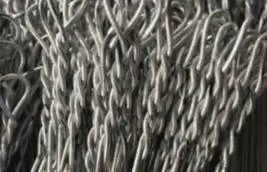-
 Phone:
Phone: -
 Email:
Email:

Understanding the Cost Factors of Barbed Wire Fencing for Your Agricultural Needs
The Price of Barbed Wire Fencing A Comprehensive Overview
Barbed wire fencing has been a staple in agricultural and industrial applications for over a century. Originally invented to contain livestock and protect crops, it has evolved into a key component of security systems for both rural and urban environments. As the demand for barbed wire fencing continues to rise, understanding the factors influencing its price becomes essential for consumers looking to make informed purchasing decisions.
Factors Influencing Barbed Wire Prices
1. Material Composition The primary determinant of the price of barbed wire is the material used in its manufacture. Most barbed wire is made from galvanized steel, which is designed to resist rust and corrosion. The quality of the steel, the thickness of the wire, and the gauge of the barbs all play critical roles in determining the cost. Higher quality materials typically translate to higher prices but offer better longevity and performance.
2. Manufacturing Process The intricacies involved in the manufacturing process can also affect the price. Automated production lines, while cost-effective in terms of labor, may have higher initial setup costs. Additionally, any specialized treatments or coatings to enhance durability can increase the final price of the product.
3. Market Demand Prices can fluctuate based on market demand. During periods of heightened demand, such as after natural disasters or economic booms, prices may rise due to scarcity. Conversely, during downturns in agricultural markets, prices may decrease as demand wanes. Keeping an eye on market trends can help consumers anticipate price changes.
4. Geographical Location Transportation costs can significantly impact the price of barbed wire fencing. In remote areas where logistical challenges are higher, the cost of moving materials can lead to higher prices for the end consumer. Local availability of materials and local competition can also vary prices considerably.
price of barbed wire fence

5. Length and Type of Wire Barbed wire is available in various lengths and types, each serving distinct purposes. Standard rolls may be more economical, but specialized wire designed for specific applications (such as high-security fences or animal enclosures) may come at a premium. It's essential for buyers to assess their needs carefully, as choosing the appropriate type can influence both the effectiveness and overall cost.
6. Additional Features Some barbed wire products come with additional features, such as UV resistance, extra-thick coatings for added protection against corrosion, or enhanced barb designs to maximize security. Such features can raise the initial price but may lead to savings in maintenance and replacement costs over time.
Average Pricing
While prices can vary widely based on the factors listed above, one can expect to pay anywhere between $0.10 to $0.50 per linear foot for standard barbed wire. Specialty or high-quality options may range from $0.60 to $1.50 per linear foot or more. It's advisable to compare prices from multiple suppliers and consider bulk purchasing options, which often yield discounts.
Conclusion
The price of barbed wire fencing is influenced by numerous factors, including material quality, market demand, geographical considerations, and special features. For consumers, understanding these elements is crucial in making informed decisions that balance cost and quality. Whether for agricultural use, property security, or industrial applications, investing in the right type of barbed wire can provide significant long-term benefits, ultimately justifying the expense.
-
Wire Mesh for Every Need: A Practical SolutionNewsJul.25,2025
-
Steel Fences: Durable, Secure, and Stylish OptionsNewsJul.25,2025
-
Roll Top Fencing: A Smart Solution for Safety and SecurityNewsJul.25,2025
-
Cattle Farm Fencing Solutions for Maximum SecurityNewsJul.25,2025
-
Affordable Iron Binding Wire SolutionsNewsJul.25,2025
-
Affordable Galvanized Wire SolutionsNewsJul.25,2025
-
Wire Hanger Recycling IdeasNewsJul.25,2025








